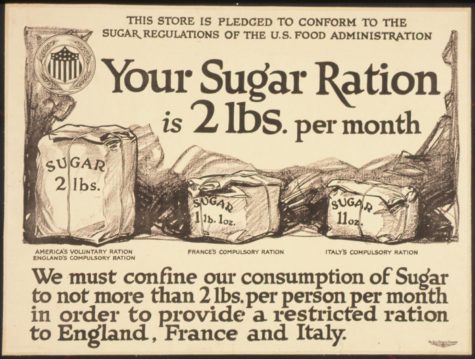With Globalization Contributing to the Spread of the Bubonic Plague, How Did It Affect People Physically and What Did They To About it?
The spread of the terrifying, indiscriminately contagious Bubonic Plague is doubtlessly one of the greatest consequences of globalization. The craving of human beings to explore, trade, travel, and interact increasingly accelerated the rate of globalization, thus the spread of the Bubonic Plague. It affected people physically in many ways and they had unique methods of dealing with the Bubonic Plague. Infectious diseases including the Bubonic Plague can spread rapidly and are no longer contained to isolated geographical areas[1]. The Bubonic Plague is fatal, and globalization plays a big role in helping them spread. The Silk Road provided a route for the connection of cultures located throughout many continents which carried the destructive Bubonic Plague that killed half of the Europeans within seven years[2]. While the Bubonic Plague is responsible for the deaths of many lives, it can be seen that deadly pandemics and epidemics still exist to this day. In fact, these things aren’t new. COVID-19, a devastating pandemic, is a consequence from globalization which is happening in today’s world. With trade and travel contributing to the spread of the Bubonic Plague, how did it affect people physically and what did they do about it?
Globalization increases global interactions through growth in international trade and travel across political and geographical boundaries[3]. The Bubonic Plague was spread from Asia to the Middle East, Northern Africa, and Europe by the Medieval Silk Road, a network of trade routes connecting the East and West, which provided connected cultures located throughout many continents[4]. The Silk Road gave many ideas, inventions, and interesting products to spread across much of the world. Plague carrying fleas and rats were also picked up by merchant ships and would dock at ports throughout Africa and Europe, spreading the plague inland through contaminated food and supplies[5]. By the time ships arrived at ports, most sailors were dead. Remaining sailors were “covered in black boils that oozed blood and pus[6].” These pests could be found almost everywhere in Medieval Europe, which is how the deadly plague made its way quickly through the continent.
There were also ways in which the Bubonic Plague was spread biologically. Yersinia pestis, a bacterial infection transmitted by way of the flea parasite, is typically spread from one rodent to another after a flea has bitten and ingested contaminated blood[7]. Due to the growth of globalization, civilizations interacted and explored more. The Bubonic Plague which can also be spread from direct contact with infected tissues, and inhalation of infected respiratory droplets helped the bacteria to spread widely in a short amount of time. Coughs and sneezes from the infected ones release the bacteria into the air, which accelerated the spread of the Bubonic Plague.
Since people did not understand the biology of the disease, Medieval physicians had no idea about such microscopic organisms as bacteria and relied on practices that were dangerous and unsanitary such as bloodletting and boil-lancing, as well as superstitious techniques such as burning aromatic herbs and bathing in rosewater or vinegar[8]. No one understood the causes of the Bubonic Plague or how they spread, and many people believed that it was a kind of divine punishment, retribution for sins against God. Some tried to escape from the crucial situation, migrating to other countries carrying the plague with them, increasing the spread of the disease. There were beliefs that enjoying life and celebrating was the best medicine for such a disease, while others locked themselves up in their homes and lived entirely apart from everyone else[9]. Soon most civilizations relied on quarantine and isolation to slow the spread of the Bubonic Plague[10]. For example, sailors were held on their ships and quarantined for 40 days. This practice became effective, and is a practice that is still being used today.
The spread of the Bubonic Plague is clearly one result of globalization which affected people physically as well as leading some of them to show senseless and unhelpful behaviors. COVID-19, a disastrous pandemic disrupting the world, is similar to the Bubonic Plague in a way of how the same aspects of globalization contribute to both of the diseases, along with the similarities in which they are treated using the same practice. Quarantino, the origin of the word quarantine, is a practice started in the Western world which was used to decrease the spread of the Black Death, and is being used to also stop the spread of COVID-19[11]. Even though globalization allows for global spread of the diseases, it also allows experts and scientists from around the world to interact, identify, study and create treatments and vaccines for a number of diseases, including COVID-19.
[1] https://en.wikipedia.org/wiki/Globalization_and_disease
[2] https://flamingnet.com/silk.php
[3] http://needtoknow.nas.edu/id/library/82/
[4] https://flamingnet.com/silk.php
[5] https://flamingnet.com/silk.php
[6] https://www.history.com/topics/
[8] https://history.howstuffworks.com
/historical-events/black-death2.htm
[9] https://brewminate.com/reactions-to-
plague-in-the-ancient-and-medieva
l-world/
[10] https://www.history.com/news/pandemi
cs-end-plague-cholera-black-death
[11] https://www.history.com/news/pandemi









Chanya • Jun 14, 2021 at
Good jobs Pinn !!!!